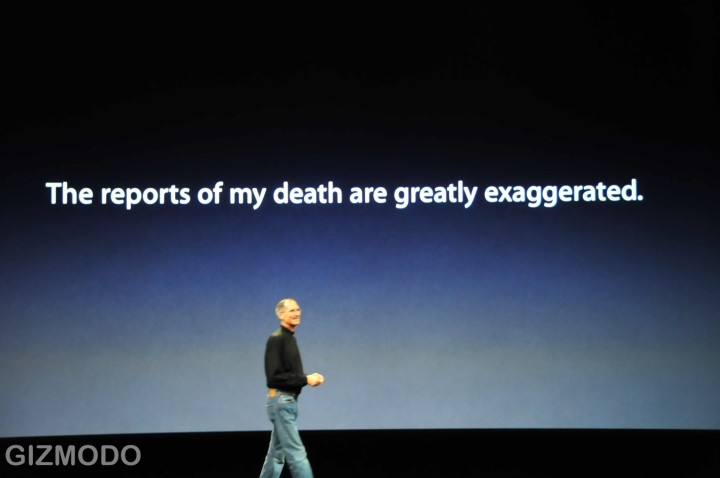I got an email forward from a relative today pointing to a pair of YouTube clips, one a part of a Barack Obama speech about sex ed, one an anti-abortion film, that included the tag line:
This is what’s going on in America. This truth will make you bawl, and hopefully this truth will help everyone to see Obama for who he really is.
For those of you who are pro-choice, this presses in the reality of abortion. Leaving a baby out to die and killing a baby in it’s mother’s womb are exactly the same. …
I watched the YouTube clips, and then did some research. And I decided that I didn’t want to just let this particular misrepresentation of Obama’s character stand. So I responded:
Thanks for forwarding.
I find it hard to imagine how the clip of Obama’s speech supports your email.
His speech is about teaching kids about abstinence, the seriousness of sex, STDs, AND contraception as part of a balanced program to make sure that they can make educated decisions about how to live their lives. (And the clip is taken out of the context of a larger speech; elsewhere he discusses the need to make sure that the mix of information is “age appropriate.”) I think that in this day and age that’s a responsible position.
Regarding the other clip, I’m not sure how Alan Keyes, a non-Illinois resident whom Obama defeated handily in his US senate race, is a reliable witness to Obama’s feelings about abortion.
I also don’t think you should casually dismiss Jill Stanek’s description of why Obama voted against the bill in question: he stated that the abortion practice described was already illegal under Illinois state law, and that the bill he voted down would have imperiled other abortion rights.
Finally, if you are going to listen to these clips, you should also be aware of Jill Stanek’s other beliefs, such as her belief that domestic violence is justified against women that have abortions, and that condom use in Tanzania should be discouraged. Furthermore, her most inflammatory allegation, that babies who were born despite attempted abortions were left to die in the Illinois hospital where she works, has never been substantiated:
http://mediamatters.org/items/200808210078
I think we all should be listening to ALL sides and all voices during this election, and learn to recognize when we are being presented with an argument that deliberately distorts or excludes facts that might make the case weaker. This is our responsibility as American citizens: not to take everything that is presented to us as unquestioned truth, but to seek out other opinions and make up our own minds. Thanks for giving me an opportunity to hear some opinions I had not heard before; it prompted me to do my own research and come to my own conclusions.
For me, this is the key question: why do people accept what they get handed as already-formed opinions? Both sides do it: clearly Palin isn’t a complete monster, and clearly Barack Obama isn’t a baby-eating Muslim terrorist. But it astonishes me how little independent research it takes to knock some of the claims down.
I think that this is what’s killing politics in the US right now, and it’s the same thing that John Stewart said to the hosts of Crossfire: unquestioning repeating of talking points hurts democracy. It strikes it at its core. Our founding fathers believed that the people were capable of governing themselves, and some, like Thomas Jefferson, took the logical next step of planning education systems that would turn out people who could participate in government as informed parties.
But making a meaningful decision, even having a conversation, becomes impossible when we agree to take our opinions via subscription, and won’t do the fact checking to confirm or deny what we’re being told.
In that spirit, I have to thank my friend Jeff Hawkins for a pointer to a list of debunked Palin rumors. I don’t agree with the list’s take on TrooperGate, and I notice that it doesn’t attempt to deny the thoroughly debunked claim that Palin stood against the federal funding of the Bridge to Nowhere, but I appreciate the reintroduction of a little balance in the debate. Cause here’s the thing: Sarah Palin doesn’t have to be a five-college dropout, or married to a guy who once had a DUI, or support shooting wolves from the air (though I’m a little concerned about the last one), for me to be concerned about her as a candidate. And I base that concern on her belief that our invasion of Iraq was “God’s will,” that we should go to war with Russia, the world’s only other nuclear superpower; over her ignorance of foreign policy–not even able to describe the Bush Doctrine!, and over what appears to be a very real abuse of power in the matter of the firing of her ex-brother-in-law’s boss.
And when I look at her in that light, I’m very concerned about her running mate’s judgment as well. And that’s the basis that’s driving my vote: my evaluation of the judgment and character of the person who’s going to be in the office and have his finger on the button.

